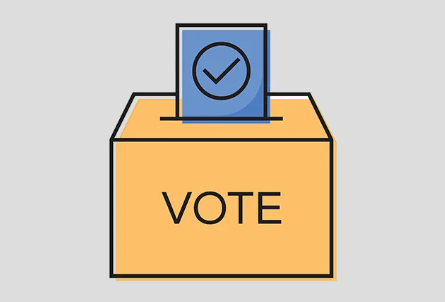Examining Rising Election Expenditure in India: Challenges and Solutions (GS Paper 2, Polity)

Why in News?
- The stark contrast in election spending between India and the United States has raised eyebrows.
- While the estimated expenditure for the upcoming U.S. presidential and Congressional elections in November 2024 is approximately $16 billion (around ₹1,36,000 crores), Indian political parties reportedly spent about ₹1,00,000 crores during the recent Lok Sabha elections.
- This disparity has ignited discussions around campaign finance and the implications of rising election expenditures in India.
Legislations Governing Campaign Finance in India
Background
The issue of election funding was not explicitly addressed during the Constituent Assembly debates (1946-1950). The legislative framework for campaign finance began with the Representation of People Act, 1950, and further developed through the Representation of People Act, 1951.
Key Legislative Framework
Representation of People Act, 1951:
-
- Lacks limits on expenditure for political leaders.
- Candidates must maintain records of their election expenditures.
- Political parties are required to disclose contributions over ₹20,000 but are not mandated to maintain expenditure accounts.
Election and Other Related Laws (Amendment) Act, 2003:
-
- Introduced Section 29C, mandating political parties to prepare annual financial reports detailing donations over ₹20,000.
- Non-compliance can result in disqualification from tax relief under the Income Tax Act.
Companies Act, 1956:
-
- Limits corporate contributions to political parties to 5% of the company’s average net profits over the past three years.
Foreign Contribution (Regulation) Act, 1976:
-
- Prohibits political organizations from receiving foreign contributions.
Income Tax Act, 1961:
-
- Contributions to political parties are tax-deductible, incentivizing donations.
Election Expenditure Limit in India
Existing Limit
- The election expenditure limit is set at ₹95 lakh per Lok Sabha constituency in larger states and ₹75 lakh in smaller states.
- For Legislative Assembly elections, the limits are ₹40 lakh and ₹28 lakh for larger and smaller states, respectively.
Purpose and Reality of Expenditure Limits
- While these limits aim to reduce the influence of wealth in elections, their effectiveness is often questioned.
- The Representation of the People Act requires candidates to keep accurate spending records; however, many candidates report spending significantly below the limits, casting doubt on transparency and accountability.
Associated Challenges
Political Party Spending — The "Elephant in the Room"
- The absence of a cap on political parties’ election expenditures raises concerns.
- Wealthy candidates may have an advantage, as the real reform requires transparency in party finances and internal democratization.
Disparity Between Reported and Actual Spending
- Official expenditures reported by major parties (e.g., BJP and Congress) are often significantly lower than actual spending.
- For instance, BJP reported ₹1,264 crores and Congress ₹820 crores for the 2019 elections, while a CMS report estimated total spending at ₹50,000 crores, indicating a 35% expenditure on campaigns and 25% illegally distributed among voters.
Unholy Nexus Between Donors and Representatives
- Increasing election costs, often funded by large donations, create a problematic relationship between elected officials and their financial backers, leading to potential favoritism and corruption.
Barriers to Entry in Electoral Politics
- High election expenditures pose significant barriers to entry for well-meaning citizens, making it challenging for them to participate in politics.
Way Forward
Advocacy for State Funding of Elections
- Reports from the Indrajit Gupta Committee (1998) and the Law Commission (1999) have suggested partial state funding of elections.
- While this could alleviate some financial burdens on candidates, questions remain about its feasibility and implementation.
Simultaneous Elections as a Solution
- Simultaneous elections might reduce campaign costs but face challenges such as federalism and the need for constitutional amendments.
- Without addressing illegal cash distribution, this approach alone may not sufficiently lower overall election expenditures.
Proposed Electoral Reforms
The Election Commission's 2016 report outlines several practical steps:
- Regulating Financial Assistance: Amend laws to ensure that financial support from political parties to candidates remains within prescribed limits.
- Ceiling on Party Expenditures: Establish limits on total political party expenditures based on the number of candidates contested.
- Expediting Legal Processes: Increase the number of judges in High Courts to expedite the resolution of election-related cases, acting as a deterrent against violations.
Need for Bipartisan Support
For these reforms to be effective, they require bipartisan political support and prompt implementation. Addressing the challenges associated with election financing is crucial for the integrity of India’s democratic process.
Conclusion
- The rising expenditure in Indian elections poses significant challenges to the democratic framework.
- To ensure a level playing field, it is imperative to reform the campaign finance system, enhance transparency, and establish equitable regulations that promote fair electoral practices.
- Through concerted efforts and bipartisan cooperation, India can strive toward a more transparent and accessible political landscape.


